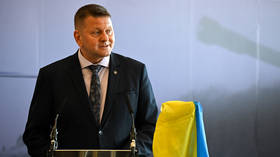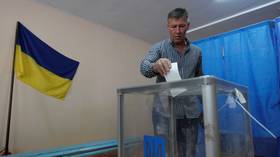Western spy agencies build ‘cyber magicians’ to manipulate online discourse

Secret units within the 'Five Eyes" global spying network engage in covert online operations that aim to invade, deceive, and control online communities and individuals through the spread of false information and use of ingenious social-science tactics.
Such teams of highly trained professionals have several main objectives, such as “to inject all sorts of false material onto the internet” and “to use social sciences and other techniques to manipulate online discourse and activism to generate outcomes it considers desirable,” The Intercept’s Glenn Greenwald reported based on intelligence documents leaked by former NSA contractor Edward Snowden.
The new information comes via a document from the Joint Threat Research Intelligence Group (JTRIG) of Britain’s Government Communications Headquarters (GCHQ), entitled 'The Art of Deception: Training for Online Covert Operations,' which is top secret and only for dissemination within the Five Eyes intelligence partnership that includes Britain, the US, Australia, Canada, and New Zealand.

The document outlines what tactics are used to achieve JTRIG’s main objectives. Among those tactics that seek to “discredit a target” include “false flag operations” (posting material online that is falsely attributed to a target), fake victim blog posts (writing as a victim of a target to disseminate false information), and posting “negative information” wherever pertinent online.
Other discrediting tactics used against individuals include setting a "honey-trap" (using sex to lure targets into compromising situations), changing a target's photo on a social media site, and emailing or texting "colleagues, neighbours, friends etc."
To "discredit a company," GCHQ may "leak confidential information to companies/the press via blog...post negative information on appropriate forums [or] stop deals/ruin business relationships."
JTRIG's ultimate purpose, as defined by GCHQ in the document, is to use "online techniques to make something happen in the real world or cyber world." These online covert actions follow the “4 D's:” deny, disrupt, degrade, deceive.

As Greenwald pointed out, the tactics employed by JTRIG are not used for spying on other nations, militaries, or intelligence services, but for “traditional law enforcement” against those merely suspected of crimes. These targets can include members of Anonymous, “hacktivists,” or really any person or entity GCHQ deems worthy of antagonizing.
“[I]t is not difficult to see how dangerous it is to have secret government agencies being able to target any individuals they want – who have never been charged with, let alone convicted of, any crimes – with these sorts of online, deception-based tactics of reputation destruction and disruption,” Greenwald wrote.
In addition, the targets do not need to have ties to terror activity or pose any national security threat. More likely, targets seem to fall closer to political activists that may have, for instance, used “denial of service” tactics, popular with Anonymous and hacktivists, which usually do only a limited amount of damage to a target.

“These surveillance agencies have vested themselves with the power to deliberately ruin people’s reputations and disrupt their online political activity even though they’ve been charged with no crimes, and even though their actions have no conceivable connection to terrorism or even national security threats,” Greenwald wrote.
In addition to the personal attacks on targets, JTRIG also involves the use of psychological and social-science tactics to steer online activism and discourse. The document details GCHQ’s “Human Science Operations Cell,” which focuses on “online human intelligence” and “strategic influence and disruption” that are used to dissect how targets can be manipulated using “leaders,” “trust,” “obedience,” and “compliance.”
Using tested manipulation tactics, JTRIG attempts to influence discourse and ultimately sow discord through deception.
When reached for comment by The Intercept, GCHQ avoided answering pointed questions on JTRIG while insisting its methods were legal.
“It is a longstanding policy that we do not comment on intelligence matters. Furthermore, all of GCHQ’s work is carried out in accordance with a strict legal and policy framework which ensures that our activities are authorized, necessary and proportionate, and that there is rigorous oversight, including from the Secretary of State, the Interception and Intelligence Services Commissioners and the Parliamentary Intelligence and Security Committee. All our operational processes rigorously support this position,” GCHQ stated.















